#red tailed tropic bird
Explore tagged Tumblr posts
Text

8 notes
·
View notes
Text
Birds, Birds, Birds at Lady Elliot Island on the Barrier Reef
0 notes
Text

Red-tailed tropic bird By: D. Baglin From: The Fascinating Secrets of Oceans & Islands 1972
#red-tailed tropicbird#tropicbird#bird#1972#1970s#D. Baglin#The Fascinating Secrets of Oceans & Islands
124 notes
·
View notes
Text

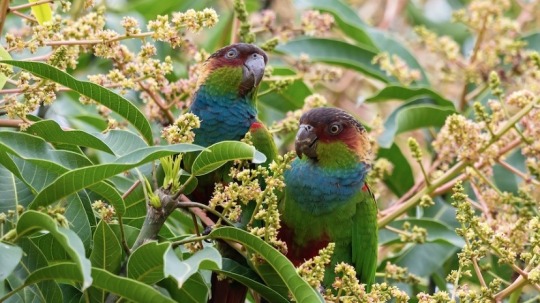
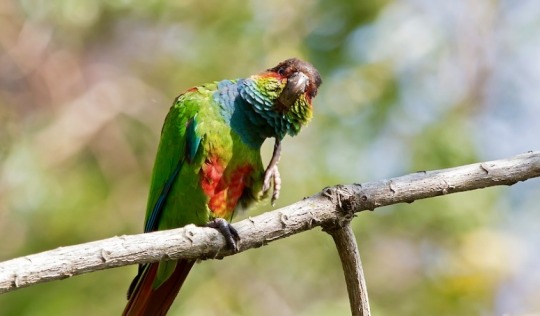

the ochre-marked parakeet, also known as the blue-throated conure or red-eared conure in captivity, is a medium-sized parrot endemic to brazil. they are known for the bright red markings on their face, belly, shoulder, and tail. they are very social birds, and often live in loud, noisy groups; it is rare to find a solitary bird. they prefer tropical lowland forest, and feed on a variety of fruits and vegetation. in captivity, they are often noisy and emotionally demanding birds. they are considered ‘vulnerable’ by the IUCN due to habitat loss and capture for the pet trade.
2K notes
·
View notes
Text
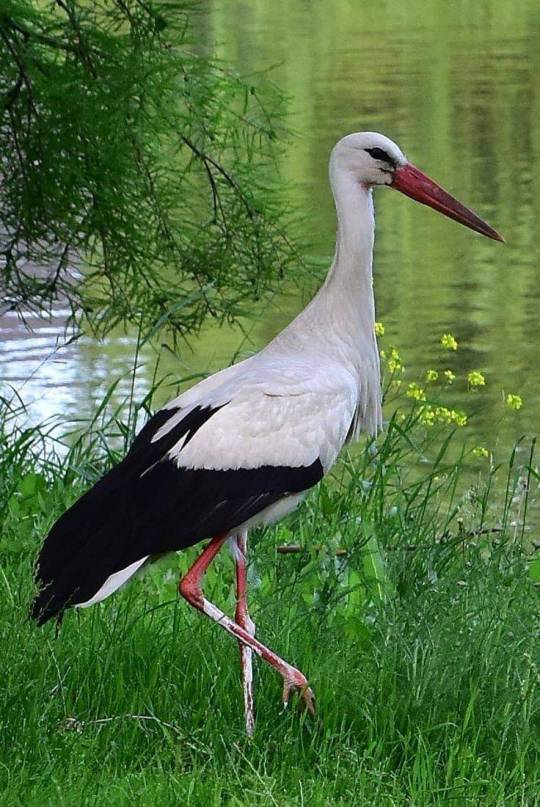
The white stork (Ciconia ciconia) is a large bird in the stork family, Ciconiidae. Its plumage is mainly white, with black on the bird's wings. Adults have long red legs and long pointed red beaks, and measure on average 100–115 cm (39–45 in) from beak tip to end of tail, with a 155–215 cm (61–85 in) wingspan. The two subspecies, which differ slightly in size, breed in Europe (north to Finland), northwestern Africa, southwestern Asia (east to southern Kazakhstan) and southern Africa. The white stork is a long-distance migrant, wintering in Africa from tropical Sub-Saharan Africa to as far south as South Africa, or on the Indian subcontinent. When migrating between Europe and Africa, it avoids crossing the Mediterranean Sea and detours via the Levant in the east or the Strait of Gibraltar in the west, because the air thermals on which it depends for soaring do not form over water.
Wikipedia
106 notes
·
View notes
Text
Word List: Animals

for your next poem/story
Aardwolf - a maned striped nocturnal mammal (Proteles cristatus) of southern and eastern Africa that resembles the related hyenas and feeds chiefly on insects and especially termites
Bittern - any of various small or medium-sized, short-necked, usually secretive herons
Chevrotain - (also called mouse deer) any of several very small hornless deerlike ruminant mammals of tropical Asia, the Malay archipelago, and West Africa superficially resembling the musk deer, the male having short tusks, and being among the smallest known ruminants, standing only about a foot high
Douroucouli - (also called owl monkey) any of several small nocturnal monkeys (genus Aotus) of Central and South American tropical forests that have round heads, large eyes, and densely furred bodies
Eland - either of two large African antelopes (Taurotragus oryx and Taurotragus derbianus) bovine in form with short spirally twisted horns in both sexes
Falconet - any of several very small falcons
Gemsbok - a large and strikingly marked oryx (Oryx gazella) formerly abundant in southern Africa
Hoatzin - a crested large South American bird (Opisthocomos hoazin) with blue facial skin, red eyes, brown plumage marked with white above, and claws on the first and second digits of the wing when young
Ichneumon - a mongoose (Herpestes ichneumon) of Africa, southern Europe, and southwestern Asia
Jacana - any of a family (Jacanidae) of long-legged and long-toed tropical wading birds that frequent coastal freshwater marshes and ponds
Klipspringer - a small antelope (Oreotragus oreotragus) that is somewhat like the chamois in habits and is found from Cape Colony to Somaliland
Lammergeier - a large Old World vulture (Gypaetus barbatus) that occurs in mountainous regions, has long black bristles at the base of the bill, and in flight resembles a very large falcon; bearded vulture
Muntjac - any of a genus (Muntiacus) of small deer of southeastern Asia with an alarm call similar to the bark of a dog and having in the male elongated, downward-pointing upper canine teeth which protrude from the lip and short, usually unbranched, pointed antlers; barking deer
Nightjar - any of a family (Caprimulgidae) of medium-sized long-winged crepuscular or nocturnal birds (such as the whip-poor-wills and nighthawks) having a short bill, short legs, and soft mottled plumage and feeding on insects which they catch on the wing
Ouzel - blackbird
Palfrey - archaic: a saddle horse other than a warhorse; especially: a lady's light easy-gaited horse
Quetzal - a Central American trogon (Pharomachrus mocinno) that has brilliant green plumage above, a red breast, and in the male long upper tail coverts
Rosella - an Australian parakeet (Platycercus eximius) often kept as a cage bird having the head and back of the neck scarlet and the cheeks white, the back dark green varied with lighter green, and the breast red and yellow
Springhare - jumping hare i.e., a sciuromorph rodent (Pedetes cafer) of southern and eastern Africa that resembles a kangaroo in form, that is about two feet long, and that is tawny brown in color and of nocturnal and social habits
Thylacine - Tasmanian tiger i.e., a somewhat doglike carnivorous marsupial (Thylacinus cynocephalus) that formerly inhabited Tasmania but is now considered extinct
Uintatherium - a genus (the type of the family Uintatheriidae) of large herbivorous ungulate mammals of the order Dinocerata from the Eocene of Wyoming resembling elephants in size and in the conformation of their limbs and having three pairs of bony protuberances respectively on the parietal, maxillary, and nasal bones of the skill, a pair of canine tusks guarded by downwardly directed processes of the lower jaw but no upper incisors, and a proportionately very small brain
Vaquita - a small, highly endangered porpoise (Phocoena sinus) of the Gulf of California having a dark ring around the eyes and reaching only four to five feet (1.2 to 1.5 meters) in length
Whitecoat - a very young hair seal and especially a harp seal
Xiphias - a genus (the type of the family Xiphiidae) of large scombroid fishes comprising the common swordfish
Zho - (also called dzo) a hybrid between the yak and the domestic cow
More: Word Lists
#animals#word list#writing inspiration#writeblr#langblr#dark academia#writing reference#spilled ink#creative writing#linguistics#words#light academia#literature#writers on tumblr#poets on tumblr#writing prompt#poetry#adriaen van de velde#writing resources
117 notes
·
View notes
Note
*slides leopardtaur Y/N to you across the table like a seedy casino*
*picks leopardtaur Y/N up and slips them into my inner jacket pocket*
You escaped Fazco's jungle park the moment it fell, darting to the outer regions of dense forest and tangled vegetation to soak in the untouched tropics. Your lower body takes after a leopard with a tawny coat and beautiful black rosettes. You're sleek, swift, and dangerous but not the biggest threat.
While in captivity, you caught whiffs off handlers of strange scents and heard gossip from those feeding you about the other monsters. You don't see any now, but you know to avoid conflict is to avoid encounters. You hunt at different times than might be typical for other beasts and avoid taking prey that might be missed. Usually, you rest in trees and hope to go unnoticed. You enjoy your newfound freedom. You hope to never see another human again.
Unfortunately, you're not alone. You realize that when you catch distant hisses and the echoes of slithering in the undergrowth. There are also the bones left from meals picked clean that you occasionally stumble upon. Massive paw tracks are left in the moist dirt. When you step into it with your paws, the imprint engulfs yours.
You'd rather not find out who those belong to. You're fierce but small. If anything big catches you in its teeth, it's over.
That doesn't mean you're never found. One lazy evening, just after nightfall, you wake up from a cozy nap along a thick tree branch. You yawn, opening your jaws and flashing your sharp teeth, stretching your arms and four legs and flicking your tail, only to realize that there's something above you. Wide, red eyes, caught off guard, stare down at you from higher branches. A naga, deep blue and hooded, dotted with diamonds of red and yellow scales, stares back. He must have been slithering along, not realizing the tree was already occupied. He starts to say something. You've already dashed down the tree trunk and bounded away faster than a bird disappearing into the forest.
That was too close, but not as close as your next encounter. The waterside is dangerous—you have to go there for a cool drink when the afternoon sun is hot. You venture forward, furry ears pricked, eyes scanning the verdant trees until you reach the babbling river's side. The noise is dangerous. It can conceal threats you might otherwise hear before they get too close, but you fold your four legs underneath you and cup your hands to drink delicious sweet water. It runs down your chin before you register another presence. The soft hiss of surprise that echoes.
You jump into the water. Splashing furiously, you turn around to face the intruder only to be met with wide blue eyes and open hands, just as stunned to see you as you are to see him. A naga of golden colors and red patches. He doesn't have a hood, not like the other one. Bright frills frame his head like a crown of beaming gold. He smiles reassuringly, almost too excited, and says, "Hello, friend." You spare him not a word as you swim across the river and disappear into the other end of the forest, ignoring his pleas to wait a moment.
The third encounter is too close for comfort. You don't realize you're being stalked until it's too late. The tall grass made you feel safe and hidden, but it only concealed who lurked here. You spy two gleaming orange eyes between blades of grass moments before the tigertaur leaps on you—and in a second, you're pinned. His paws hold your leopard body down, easily dwarfing you, as his hands grab your wrists. His strength puts an end to your attempts to fight back or wriggle free. He coos at you, much to your dismay. When he leans in close, you brace for his teeth to sink into you. Instead, he licks your cheek and tells you how sweet it is to finally get a proper eyeful of you. You're always running or hiding or sleeping. He wants to know your name. He wants you to know his name. He wants to see you again very soon, ignoring your confusion and disbelief that you're still alive.
He finally lets you up. He grabs your wrist when you try to flee. His striped tail whips about like he's playing while your own snaps in feral agitation. He tells you that you can trust him, especially over those snakes. You break free (did he let you break free?) and race back to the shadowy shelter of the jungle trees, breathing hard and frazzled.
You hide harder, staying in trees more and avoiding moving too much in the middle of the day and at midnight. Your paranoia grows when you notice little offers left under the tree where you had a nap at dawn and dusk: small morsels of meat, berries, nuts, and even flowers that hold no nutritional value but are gorgeous. You hear the nagas more, feel their presence, even catch sight of them as they catch sight of you, calling out, urging you to stop for a moment, please.
The tigertaur finds you when he pleases. He catches you bathing in the river one night and proceeds to help you groom your coat and hair despite your raised hackles, and he tells you that you should hunt food together; it would be far more efficient to share meals, and you need more meat. No matter where you go, where you hide, he finds you. You're certain he takes delight in catching you by surprise by how eagerly he snatches you up each time.
You don't like the offerings left by the nagas but you do take them, even the useless flowers. You don't like the tigertaur dragging a large carcass out, dropping it at your feet, and telling you to indulge, but you do eat. You don't know how to handle the attention of so many large predators, much less what to say when you drop by the babbling waterside to find the yellow naga smiling at you and telling you that it's safe, they won't hurt you. You don't know how to respond when you wake up to a soft hum in the middle of the night and find the blue naga a tree over, coiled up and watching you with a ruby gleam and a soft request to come over to his tree. He doesn't bite.
You don't know what to do but you want to survive, and you don't know if you can with the nagas and tigertaur beckoning you closer.
#sun and moon @ leopardtaur y/n: pssst pssst pssst#eclipse @ leopardtaur y/n: *yoinks*#augh i love them#leopardtaur!reader#tigertaur!eclipse#naga!sun#naga!moon#naff writing
226 notes
·
View notes
Text
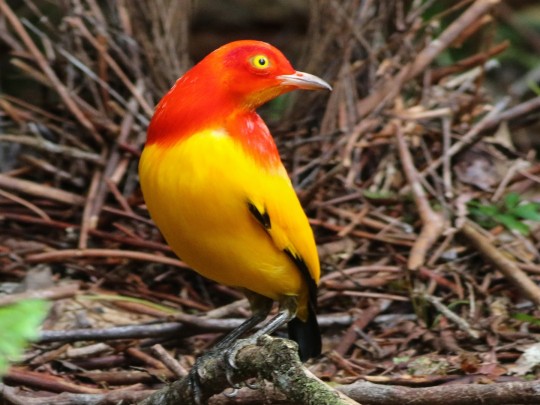
Flame Bowerbird (Sericulus ardens)
Habitat & Distribution
Exists only in tropical rainforests
Found on the southern part of the island of New Guinea
Physical Description
Weight: 70-230 g (2.4-8.1 oz)
Wingspan: 68-78 cm (26.7-30.7 in)
Males have a red head and yellow body, with black edging on the wings and tail
Females are a more drab brown, with yellow markings along the wing and throat
Behaviour
Males spend most of their time building an elaborate, arch-shaped 'bower' to attract females
Although not aggressive, males will chase away rivals who encroach on their territory
The diet consists mainly of fruit and insects
Predators include birds of prey and large lizards
Key Advantages
Flame bowerbirds can mimic the sounds of other animals, which may confuse potential predators
Photo by Chris Wiley
74 notes
·
View notes
Text
@dasnercaret already made a winged/bird au for isat but i'm giving my two cents because i am neurodivergent and birds are my Heart and Soul
-
Siffrin: Loggerhead Shrike
This was actually my immediate thought for Siffrin. A few things, mainly- besides being small and fast, the Loggerhead Shrike is also known as the "butcherbird", because they use their beak and thorns to impale their prey and store it for later. I always kinda thought that Siffrin's dagger looked like a bird beak? That, and when food gets low in the winter, they become anxious???? They're anxiety birds that can kill you.
Note: Loop is the same, but where the white patch on the primary feathers are I imagine them shaped like stars!!
Isabeau: Red-Tailed Hawk
They're big red bulky birds. It's literally the only thing I could think of.
Mirabelle: White Dove
I thought a lot about Mirabelle's for a while, and this was the one thing that felt right? Besides her very pure heart and use of healing craft, she's very peace-oriented and has a very spiritual journey that i think fits the dove motif. Plus, she's considered the "chosen one", so the idea of pure white wings fits her in some way.
Bonnie: Seagull
My initial idea had Bonnie as a little green budgie, because of their rather boisterous personality and allusions to their home being tropical, but then somebody listed them as a seagull,,, and it just felt right??? So yeah
Odile: Red-crowned crane
The crane imagery for Odile is limitless. I almost made her a crow or some kind of corvid, but the kind of regal and sage-like composure she has doesn't really fit the chaotic nature of crows. So a crane it is.
The King: Harpy Eagle
I'm only going to say this: Harpy eagles have a 530 psi grip strength. I'm sure you can piece together the rest. Sorry Bonnie.
Head Housemaiden: Trumpeter Swan
Giant woman, giant bird. Very regal and pretty. Seems fitting. Also white hair.
-
If you have any other ideas (OR CAN FIND ME THE OTHER PERSON WHO DREW WING AU FOR ISAT I WANNA TAG THEM-) lemmie know, i'm interested in what ppl think about this
#isat#in stars and time#just chatting#i love birds#neurodivergent for birds#editing with the tags for the og wingfic isat creator thx dasner#wormwood rambles
55 notes
·
View notes
Text
I talked before about fish Pokemon and that was great, but it's not the only mon series I like. So fuck it, fish Digimon time. This will definitely be less analytical and more me gushing about Digimon I like because I may be a bit out of it right now. Also sorry if I missed any.
Starting at rookie/child level we only have one fish but why would we need more when we have Swimmon?
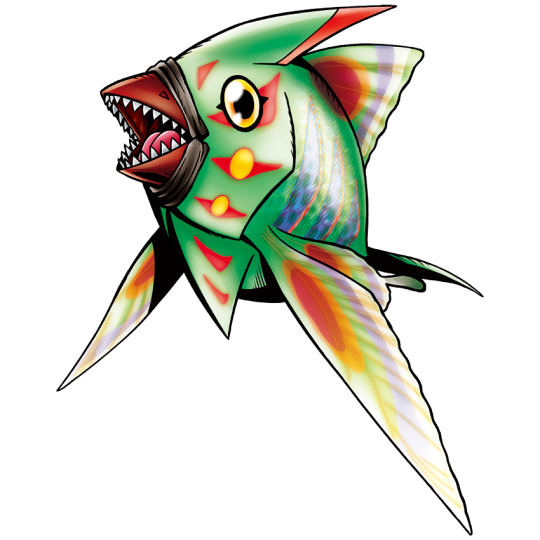
Loot at it, it's amazing! It's some some sort of tropical fish, obviously, but with some embellishments, like the beak full of teeth. I love how colorful and pointy it is. It works great as a rookie for so many aquatic lines. I think some great lines for it would be Swimmon -> Coelamon -> Piranimon -> MetalPiranhimon or Swimmon -> Tobiumon -> DIvemon -> Surfimon. Speaking of which...
I'm going over champion/adult Digimon together and starting with Coelamon.
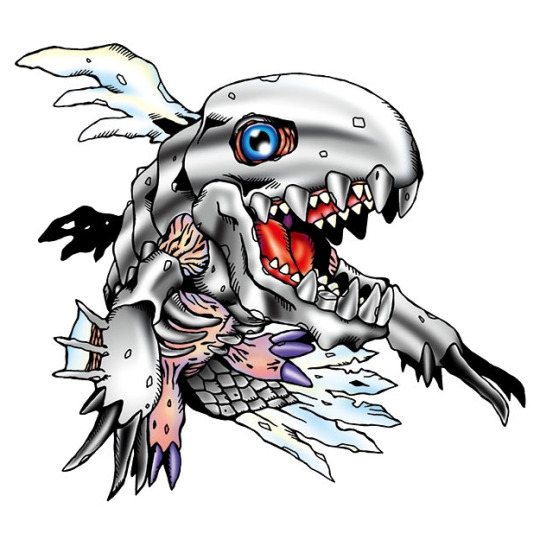
It's a coelacanth! Coelacanths are amazing as some of the last lobe-finned fish. In this case, the lobes have been exaggerated into proper limbs, like how lobe-finned fish are the ancestors of tetrapods through intermediate limbed fish stages like tiktaalik. Its armor might also be based on placoderms, extinct fish with bony armor.
We have surprisingly few shark Digimon, but one we do have is Tobiumon, and it's amazing.
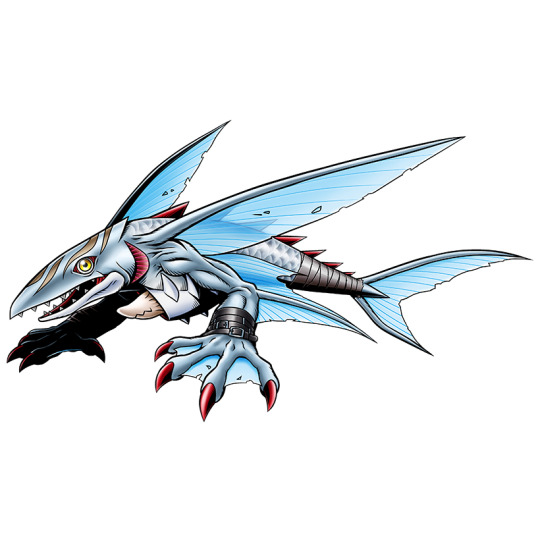
A shark with arms that can fly with its fins is such a Digimon concept that all it needs are some guns to be peak Digimon. It even has a remora missile launcher on its chest!
The armor Digimon give us several fish, and while I don't think any of them particularly work as armor evolutions, they're fine as Digimon on their own. And before anyone mentions it, Tylomon is a tylosaurus, not a fish. The first is Manbomon, and while it's a terrible armor evolution for Patamon, A mola mola wearing boxing gloves is such a goofy concept I can't help but love it.
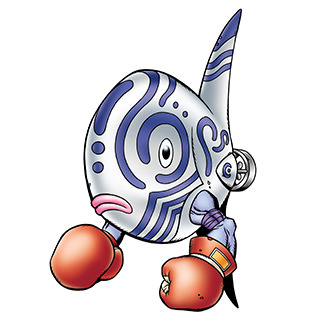
Next is Seahomon, which is pretty obviously a seahorse, but its snout is a trumpet and it has a cape that turns into wings I guess? I dunno, it's a pretty weird one.
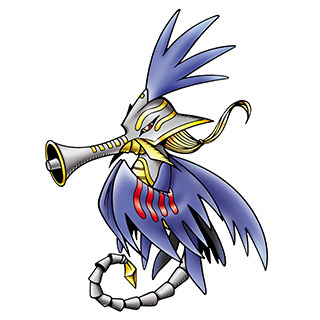
My favorite of the three is Mantaraymon. Despite the name, it doesn't have a manta ray's face, instead having a rostrum like a shovelnose ray or even maybe a dolphin. I do like how they used Patamon's ears as the cephalic fins.
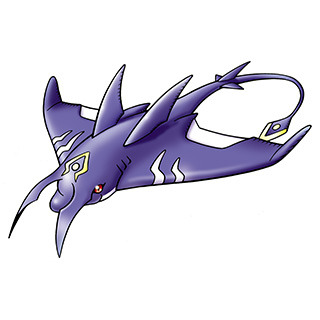
Mantaraymon also has a more mechanical X-antibody variant that gives it kind of a stealth fighter vibe. I kind of like it more than the original Mantaraymon, which is saying something since I usually don't like X-antibody Digimon.
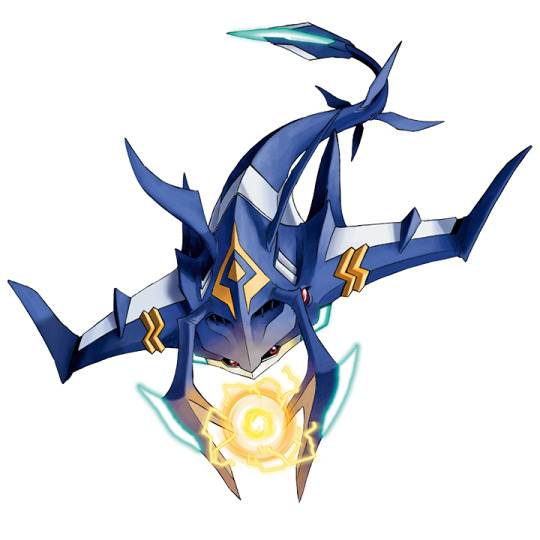
Moving onto the ultimate/perfect level we have a new mon from China, Huankunmon.

I love this design so much. Its based on the peng, a mythical creature that can turn from a bird to a fish. Fittingly, Huankunmon's line goes from a bird (Xiquemon) and goes to a bird/fish/dragon hybrid (Xiangpengmon). It'a also based on a flying fish since it can fly with a swimming motion. And it can turn invisible. There's nothing not to love about it.
Next is Piranimon, and look at this absolute beast
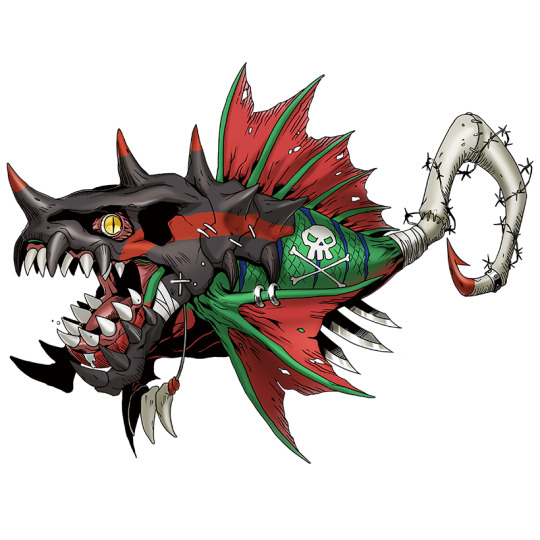
Some might call it overdesigned, but I absolutely love it. I particularly dig the tail being a fish hook covered in barbed wire. Its based on a red-bellied piranha, but the pop-culture version where they're bloodthirsty monsters that attack everything they see. Real piranhas are not like that. The helmet it wears may also be based on placoderms, some of which only had the bone armor on the front of their bodies.
Finally at this level, we have Divemon.
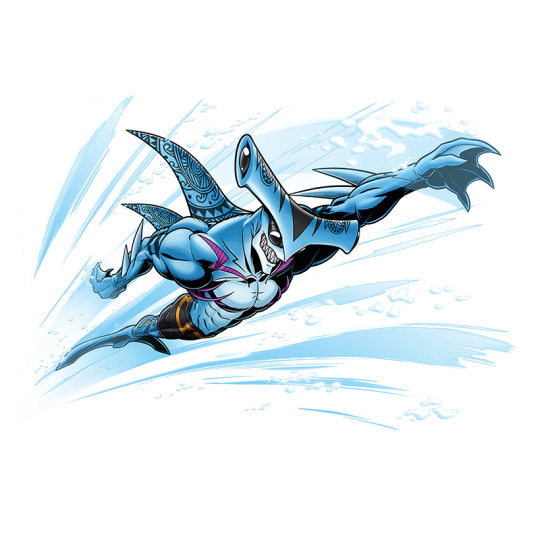
I'm not as big of a fan of this as I am of the other two, but I do like the Polynesian-style tattoos it has. Its a combination hammerhead shark and professional swimmer.
Maxing out at the mega/ultimate level we have MetalPiranimon.
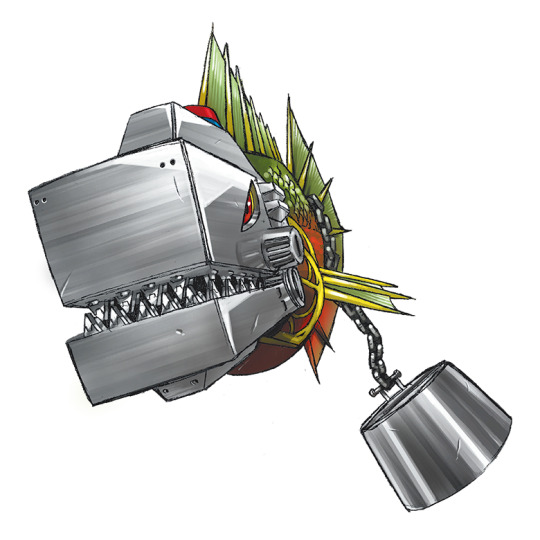
While I appreciate any fish megas, I think this is a step down from Piranhimon. It's just a red-bellied piranha with a big metal head dragging around a counterweight. I'm not saying its bad, I'm just saying that Piranhimon is better. Fun fact, Metalpiranhimon came first. Piranhimon was designed because someone thought it was weird that there's a MetalPiranhimon but no regular Piranhimon. There are a few examples of that in Digimon, like SkullBaluchimon coming before Baluchimon.
Next is Regalecusmon, which might be stretching the definition of fish a bit, but it does have an oarfish for a head.
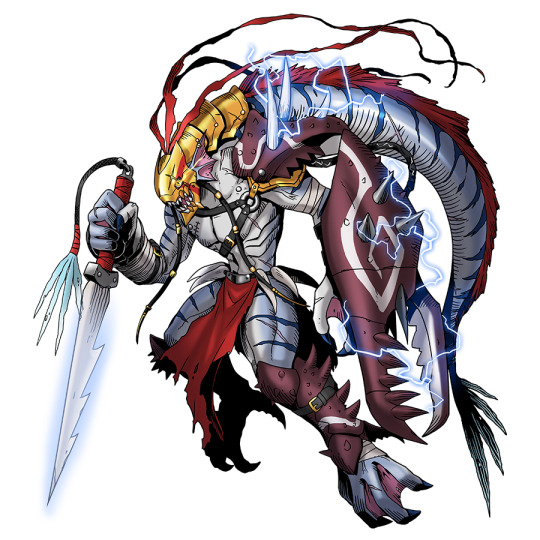
I really like this design, especially it using Zudomon's horn as a sword and what looks like Ebidramon's claw as a shield. I think it would make a great villain for an aquatic episode or storyline of a show. Maybe like a more modern version of MetalSeadramon from Adventure.
Finally, we have Surfimon.
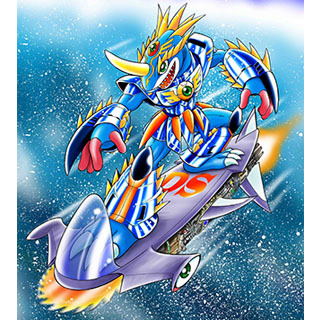
It's a mechanical shark man riding a rocket-powered hammerhead shark surfboard with a buzzsaw on the front. We have reached peak Digimon, people. And even better, it was created by a fan as part of a contest. Frankly, it's a shame that it hasn't gotten any appearances in the anime or games. I don't get why some fan-made Digimon can go onto have major appearances like Dobermon, Cyberdramon, and SoundBirdmon while others get ignored. A lot of them don't even have art. I'd be pretty bummed if I was a kid who won a contest to have my design become official and then it was never used. I think Surfimon should get an anime appearance and the English dub should make it talk like a Californian surfer dude.
#fishblr#digimon#fish#I'm such a nerd#coelamon#tobiumon#manbomon#mantaraymon#seahomon#piranimon#divemon#huankunmon#metalpiranimon#regalucusmon#surfimon#shark#coelacanth#manta ray#seahorse#sunfish#mola mola#piranha#oarfish#hammerhead shark
154 notes
·
View notes
Text
Gen 3 Beta Pokemon 'Dex - Page 1
So the teraleak has revealed a whole bunch of beta gen 3 pokemon. I wanted to go through them all one by one and present the gathered information on them in some Tumblr posts. HiResPokemon (HRP) is keeping a spreadsheet of this info, but I find it incredibly awkward to scroll through it, so I wanted to present the info in a format that's easier for me to read (and perhaps for others too).
I'm going to start with the beta pokemon that seem to have been entirely cut. This will no doubt span several posts since there is a 30 image cap per post.
One final note, we do not have equal amounts of data on all of these beta pokemon. For many of them we only have sprites and a name. For others, which were far closer to being included in the game before being cut, we have a lot more info.
Okay, onward to the beta 'mon!

Name: Boyatto [ボヤット]
My Notes: HRP notes this yeti pokemon was possibly inspired by a yokai called Ashiarai Yashiki. (I gotta say it seems uncomfortable to have a mouth on your foot, though)


Name: Bii [ビィ]
My Notes: It appears this pokemon's data was in the process of being swapped over to Wingull; its name is listed as キャモメ(Camome), its typing is Flying/Water, its Category name is Water Bird and its height/weight are Wingull's as well. As such we don't know actually much about this pokemon, other than it looks like a bug type. I am not sure what they were going for with this bug's design, to be honest.


Name: Kuroboshi [クロボッシ]
Type: Rock
Category: Black Stone
Height/Weight: 1'8", 50.7 lbs
Pokedex Entries:
It's impossible to understand what they're thinking because their expression is always the same. When stared at, it makes one feel unsettled.
--
After the rain, they can be seen rubbing their wet bodies with leaves, polishing themselves. They seem to be satisfied when they are shining black.
Evolution: Evolves into Claydol
My Notes: This was apparently inspired by a roly-poly toy, which rights itself if you push it down. While I do feel as though Baltoy matches up with Claydol a lot better, it's a shame this little guy wasn't re-used as a seperate pokemon.


Name: Toroiika [トロイーカ]
My Notes: Previous beta squid pokemon include a couple from Red/Green, and a drill-armed Squid from Gold/Silver. At least we finally got Inkay!


Name: Ubausagi [ウバウサギ]
Type: Normal
Category: Foster
Height/Weight: 2'7'', 27.6lbs
Pokedex Entries:
If it has no offspring, it will seek out a small living thing and place it onto its back.
--
A Pokémon that wraps its tail around to make a cradle while raising its child on its back. Sometimes it bonds with a different creature.
--
It can run 50 meters in 7 seconds flat. Sometimes, it may accidentally drop its child. It brushes its teeth by gnawing on hard objects.
Additional Gamefreak Notes: Its stats are average strength, high speed.
Signature Move Ideas:
'Milk Time' - Withdraws from the battle forcefully to feed milk to the child on its back.
'Tantrum' - The kids on its back throw a fit, screaming loudly, which lowers the opponent's attack power.
My Notes: Literally the best scrapped gen 3 pokemon, fight me


Name: Biskyal [ビスキャル]
Type: Grass
Category: Everlasting Summer
Height/Weight: 2'4'', 17.6lbs
Pokedex Entries:
Lives in warm regions, often acts in groups, becomes very noisy when three or more are gathered.
--
It is said that giving one of its head petals to a loved one will make love come true. It gets furious if someone tries to take its petals.
Additional Gamefreak Notes: Born in tropical regions. It is weak to the cold. As long as the temperature is high, it can survive in even the most polluted environments, showing remarkable toughness and resilience. Its personality is selfish and self-centered. Only females exist.
Evolution: Evolves into Rillidiy
My Notes: HRP notes that this pokemon may have been cut due to the controversy surrounding Jynx (which would have been fresh in the minds at Gamefreak, at the time).


Name: Ryllidy [リリディ]
Type(s): Bug/Psychic (previously Grass)
Category: Red Spider Lily
Pokedex Entries:
It has long antennae that are highly sensitive, capable of sensing subtle air currents to understand the thoughts of its enemies.
--
It mesmerizes opponents with its dance-like movements and deep gaze, putting them into a hypnotic state. Only females of this species have been confirmed.
Additional Gamefreak Notes: The part that looks like a skirt is actually part of its body, and its legs are properly hidden inside. It excels at sensing the emotions of others, using its antennae to feel the opponent's aura. It can manipulate others at will. It is often seen standing still, gazing at the sunset sky.
Evolution: Evolves from Biskyal
Signature Move Ideas:
'Hypnotic Gaze' - Puts the opponent to sleep and manipulates them at will, allowing the user to command the opponent's moves. The opponent must be in a sleep state for this move to work.
Other Moves: Sleep Powder, Stun Spore


Name: Kanbok [カンボック]
Types: Grass/Water (previously pure Grass)
Category: Shrub
Height/Weight: 4'7'', 154.3lbs
Pokedex Entries:
Stores a large amount of water inside its body, which it can expel in a shower-like fashion while spinning. It's particularly useful during hot summer days.
--
Drinks more than 100 liters of water per day, and its leaves on its hands wilt if the water stored in its body runs low.
Additional Gamefreak Notes: By spinning, it creates wind with the leaves on its head and hands. It usually hops around to move. High defense. Can learn water type moves.
Evolution: Was going to evolve into an undecided pokemon which then would have evolved into Tropius
Signature Move Ideas:
'Sprinkler' - a regular physical attack where the body spins rapidly and shoots out water.


Name: Komari [コマリ]
Types: Ghost (previously Psychic)
Category: Spirit
Height/Weight: 8'', 3.3lbs
Pokedex Entries:
Is known to guide those who are lost in deep forests with the sound of its horns. Seeing this Pokémon is said to bring happiness.
--
Shakes its head side to side, producing a clear, bell-like sound similar to a xylophone, using the tones to communicate with others.
Additional Gamefreak Notes: It inhabits deep forests, and its ecology remains unknown. Its horns have a bell-like structure, and when it shakes its head, it makes a 'kaka' sound. When humans or Pokémon approach, it rings its horn to signal its companions. It communicates with its companions through the sound of its horns. It does not have a mouth. When angered, it emits ultrasonic waves from its horns, overwhelming its opponent. Extremely high special defense.
Signature Move Ideas:
'Exit Path' - Forces the opponent’s Pokémon out of battle and makes them switch to another Pokémon.
'Echo' - Reflects the opponent's move back at them.
My Notes: Because its name is a combination of 'Kima' ('the space between trees') and 'Fairy,' if this pokemon were ever made a reality in modern times I think it would be Fairy typing.


Name: Monorabi [モノラビ]
My Notes: Some of these pokemon have critique notes included with them; for our little one-eared rabbit friend here, the note was 'Looks deformed.' That note seemed especially mean and uncalled for, I really like this bun.


Name: Stanbu [スタンブ]
My Notes: The critique for this one was 'too much like Sudowoodo'


Name: Rikugin [リクギン]


Name: Aarei [アーレイ]


Name: Otoma [オトマ]
Type: Water
Category: Scale
Height/Weight: 1'4'', 5.5lbs
Pokedex Entries:
It produces sound by spinning the disc on its head. Each individual produces different musical scales. The sound varies based on the size of its body.
--
When eight of them gather, they start a performance. It inhabits ponds.
Additional Gamefreak Notes:
Uses its tail to flick the disc on its head, creating musical notes. The scale of the notes changes with the size of its body. Lives in small ponds rich in water plants. When its peers gather, they start playing lively music by the water's edge.
Evolutions: Evolves into Keromeelo
My Notes: While we do eventually get the sound-themed Tympole line in gen 5, that family line looks so very cursed to me and I think I prefer the DJ tadpole here.


Name: Keromeelo [ケロメーロ]
Evolutions: Evolves from Otoma
My Notes: It was critiqued for being too similar to Politoed. HRP spreadsheet notes something disturbing, that the orange strand that makes up the shape of a clef note may indeed be this frog's intestines (similar to the swirl in the Poliwag line being its intestines)

Click for Part 2!
14 notes
·
View notes
Text
BOTD: Magnificent Frigatebird

Photo: Peter Swaine
"Massive seabird of warm tropical oceans and coastlines. Overall black with extremely long, deeply forked tail and angular wings. Male completely black with inflatable red pouch on throat (not seen away from breeding colonies) and bluish eyering. Adult female has white chest and golden bar on shoulder. Young birds have white head and breast. Often soars for long periods and flies with slow wingbeats. Steals food from other seabirds. Surprisingly acrobatic during aerial chases despite its large size."
- eBird
#birds#magnificent frigatebird#birds of north america#north american birds#frigatebirds#frigate birds#seabirds#sea birds#birds of the us#birds of mexico#birds of central america#birds of the caribbean#birding#birdblr#birblr#bird of the day#Fregata magnificens
100 notes
·
View notes
Text
Yay, parrot post! With parrot fun facts! And parrots! I like talking about birds lol
These cuties are rainbow lorikeets!

They're native to Australia and they eat fruits, pollen and nectar. They are also monogamous and mate for a long time or life. In some areas, semi tame ones will approach humans. Tourists and locals can feed them honey covered bread. Thankfully they are listed as least concern on the conservation status scale.
Next is the military macaw!
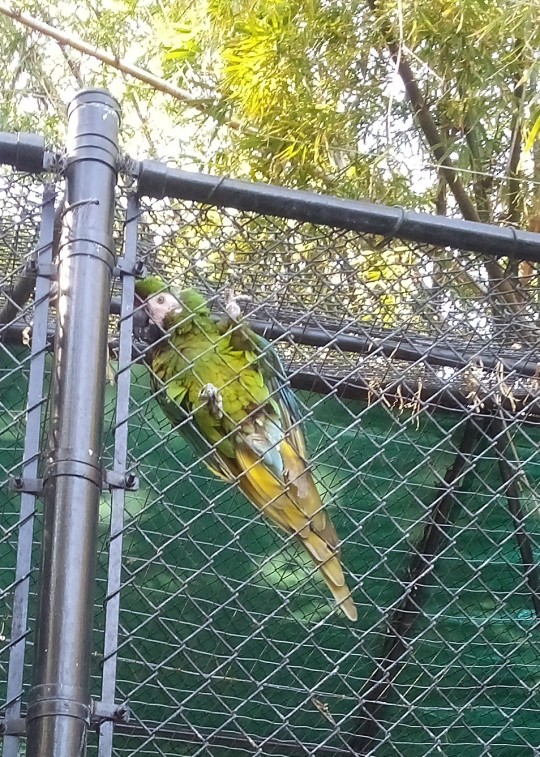
Military macaws are native to Mexico and South America. Unfortunately, they are listed as vulnerable on the conservation status scale. They're also the smallest of the large macaws at 33 inches tall with a wingspan of 110 cm. They weigh about 2.5 pounds fully grown. Their name comes from their green feathers and red crest and tail, which look a little like a military uniform. You can't see it in this photo tho.
And the scarlet macaw!
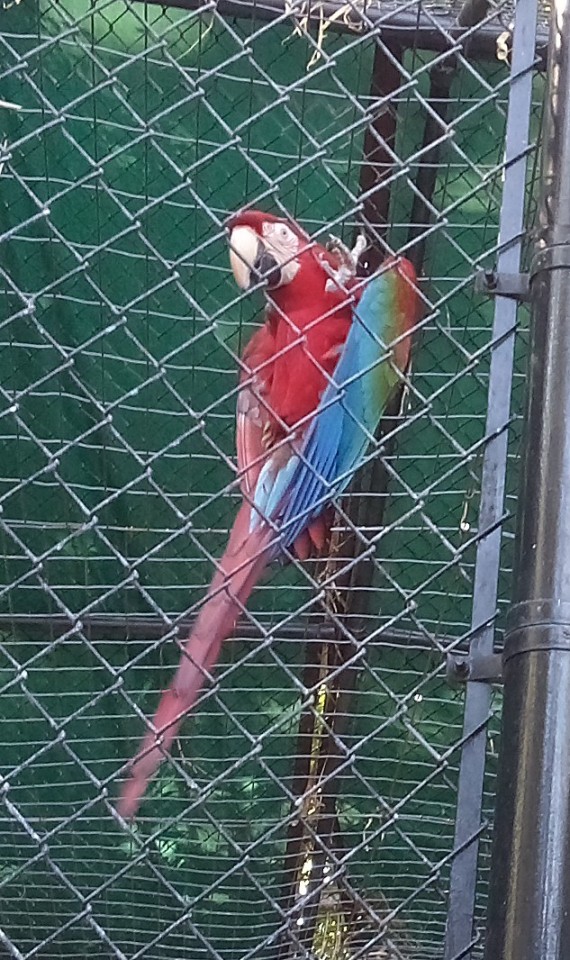
These guys are usually what people think of when they hear the word parrot. They are native to the humid evergreen forests of tropical South America and Central America (think Peru, Bolivia, Columbia, etc). They eat fruits, seeds, nuts, flowers and nectar. They also like to eat insects and larvae. They can live up to 75 years and are listed as least concern.
Last is the blue and yellow bellied macaw!
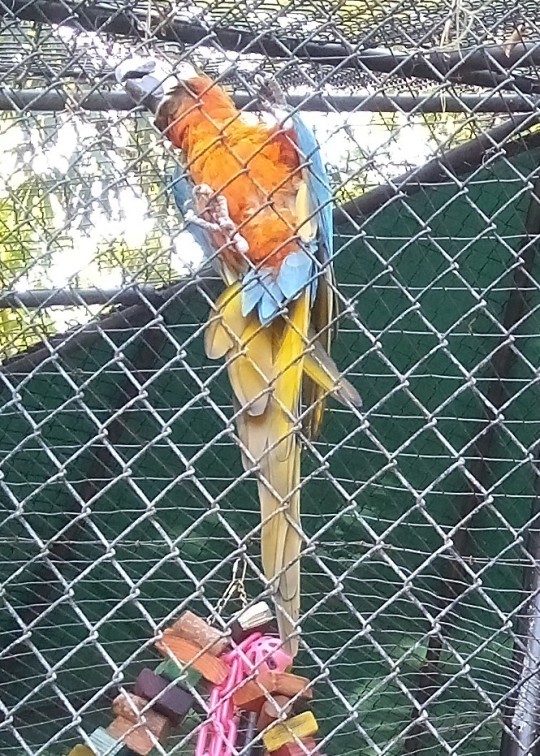
(It's late and this is getting long and I'm getting lazy so I ripped this paragraph off Wikipedia. The last sentence was not ripped tho)
The blue-and-yellow macaw, also known as the blue-and-gold macaw, is a large, vibrantly colored parrot native to the Neotropics. Appearance: These macaws have blue backs and wings, yellow undersides, and green foreheads. Their long tails are mainly blue and yellow, and their beaks are gray-black and hooked. They weigh around 2 pounds, have a 3–4 foot wingspan, and 1–2 foot long tails. They are listed as least concern.
I know the picture I took isn't great so here's another. I think it's from nat geo.
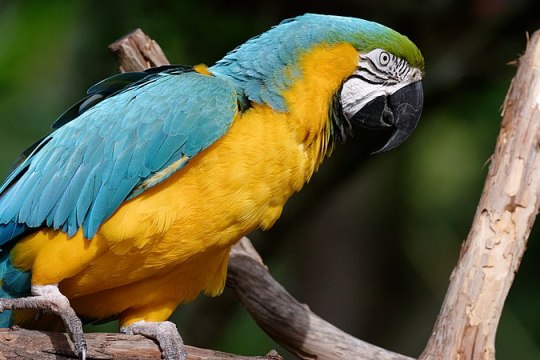
In short, I like birds a normal amount I swear
#cute animals#birds#photography#parrots#macaw#the blue and yellow macaw kept screaming at people#it was very funny
4 notes
·
View notes
Text

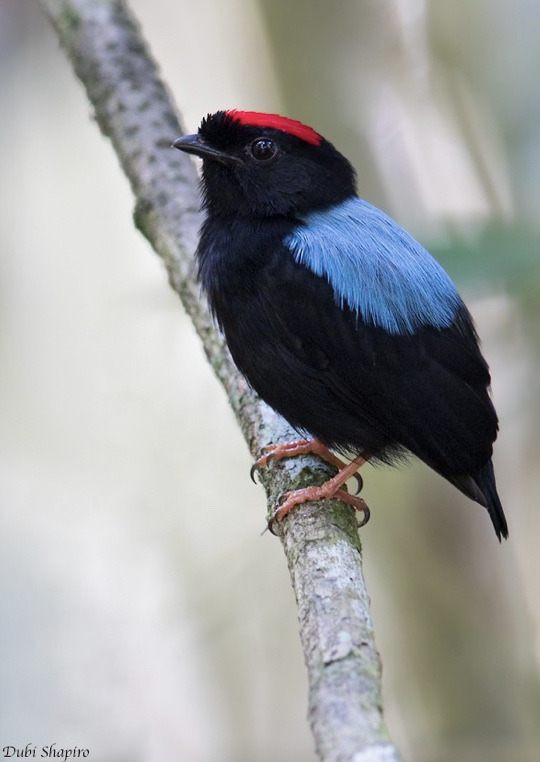
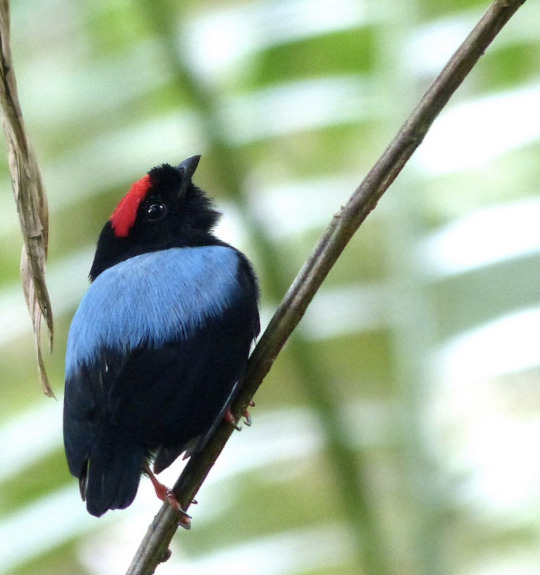

the blue-backed manakin is a small passerine bird found in deciduous forests of tropical south america. the species is named for the male’s distinctive plumage, with a bright blue back on a black body, with a red-accented head; females are primarily olive green. they are almost identical to the lance-tailed manakin, but lack that species’ distinct namesake tail feathers. this species primarily feeds on fruit and insects. they are known for their elaborate breeding performances, like other manakins; however, uniquely, dances to win affection from females are not performed competitively, but collaboratively. up to eight male manakins will dance together in a ‘lek’ (nest or burrow-like construction made solely to perform mating dances) to impress a female.
815 notes
·
View notes
Text
MoaH Races/Species/Lineages Quick Notes
Another quick notes (yes, this is the quick notes, I know), I'm planning to do full cards for these once y'all have met some more characters within these lineages in MoaH.
Existing Lineages
Humans - Humans are generally considered the original species that the Goddesses created. From there, different clans petitioned the Goddesses for certain blessings that would then do magic evolution and create the other species. Chiefly, this applies to the human-like peoples (Hylians, Sheikah, Gerudo, & Dreeka). Humans don't have a whole lot of special blessings, but they are far more adaptable to changes. Unlike other lineages, humans can very easily change their material affinities.
Hylians - Blessed by proximity to the Sacred Realm at the beginning of time, Hylians are generally very similar to humans. They do have improved natural senses, visible by their elongated pointed ears, but aren't quite full blessing recipients compared to other lineages like the Gerudo. Mechanically for Zelda & Link's D&D character sheets, I used half-elf instead of elf, if that helps quantify the level of blessing that Hylians have in setting. Their ears are long enough to be partially emotive. Not full range like the Keaton or Folmir, but they do move up and down more than normal human range to reflect emotion.
Sheikah - No one knows who gave the Sheikah their blessing, and the clan hasn't been forthcoming on sharing that knowledge. There are two identifiable traits for the Sheikah, their eye color, which ranges in reds, and their pointed ears (though not elongated). Other than that, the Sheikah had a natural talent for a number of illusion based magics, even the ability for shapechanging in some cases.
Gerudo - Din's blessed peoples, the Gerudo get some expansion in MoaH that will be saved for more detail in the book set in Rahaal. Most notable for their height and pointed ears, most people will conflate the Hyrulean Gerudo traits for amber eyes and red hair as a common trait as well. Due to, let's say historical tension, with the Gerudo, most Hyruleans aren't familiar with the exceptions.
Gorons - The Gorons in MoaH are largely unchanged from expectation. Generally masc, stone giants, though the composition of that stone does vary by region. Hyrulean Gorons for example have the tan-brown clay coloration we're familiar with, but Gorons from Naydrana have ranges of blue-gray stone reflective of their mountains and Gorons in Teromac have a brighter red common trait, to include some striation like banded stone.
Rito - Rito vary widely on their avian traits based on their heritage. Hyrulean Rito are most often within the predator birds like hawks and owls, though there is some variety. More coastal lineage Rito may take on traits from tropical birds like parrots and seagulls where moving into more mountainous regions see more heavy plumage like grouse and turkeys. The leader of Rito Cleft, Taro, has the plumage of a rock ptarmigan as an example. Their commonalities are chiefly in that they are bipedal with taloned legs and that their wings have a small degree of articulation at the ends to use as hands when not in flight.
Zora - In the time of MoaH, the Sea and River Zora distinctions have blurred a little, chiefly in that they are not limited to Sea and River Zora. Like the Rito, Zora also have a much wider range of traits based on many types of fish. Marela for example draws her traits from jellyfish and beta fish, where the steward of Lake Town and his son, Kije and Kaju, have traits resembling arowana. Commonality here falls in the presence of a tail fin on the head and webbing on the hands and feet. I've mentioned it before, but the height range also is not influenced by gender, there are short and tall Zora of all genders.
Koroks - Koroks in MoaH do take on their more familiar Wind Waker and Wild duo appearances, but they also have some variance based on the forests that they're home to. Most people will be familiar with Hyrulean Koroks and the traits they draw from the Deku Tree. But in Farona, where the most prominent forest entity is the Maru Tree, Koroks have a darker wooden bark and often wear masks in gold and red. There are also Koroks in both places who rather than wearing leaf masks will instead adorn themselves with fungi, like Rephi.
Keaton - Keaton have two forms: a bipedal anthropomorphic fox form and then their full fox forms. The change does alter their size somewhat. Keaton have natural shapechanging abilities and are adapts at illusion magics. Most Keaton will only have one tail, but powerful Keaton mages will develop additional tails. They do not become more human-like or taller. They also will vary in the type of fox they resemble. Hyrulean Keaton most often resemble red and silver foxes, where in somewhere like Farona or Naydrana you'll see more arctic fox traits, and in somewhere like Rahaal you'd likely see traits similar to a Fennec fox.
New Lineages
Dreeka - The Dreeka are a group that departed from the Sheikah way back at the beginning of time, and are now being partially remerged to the Sheikah due to distrust towards Dreeka practices. The Dreeka worship the Horned Goddess as though She is on equal standing to the main Three. As part of this worship, they maintain a series of libraries around the world, with a thorough documentation that spans timelines. It's no small part thanks to the Dreeka that Hyrule has been able to thrive post the Convergence instead of being swallowed by the influx of magic and how that would have shaped society. For folks who read GoS, you might recognize them as the Drex. They are largely the same biologically as the Sheikah, though they have purple irises as a shared trait like the Sheikah have crimson ones, and there's some rumors that they know how to teleport short distances.
Folmir - The Folmir are a shorter species, like Keatons, though their traits vary broadly across the Mustelidae family (ferrets, otters, badgers, polecats, martens, etc). Like the Keaton, they are bipedal, though they do not have transformative magics. They do have semi-prehensile tails that they can train to have more range. They appeared after the Convergence when the influx of magic "awakened" a number of creatures for which they share their primary traits. Because of how the magic expanded, there are very few Folmir living in Hyrule, they've largely settled in other regions like Farona, Lyberic, and Teromac.
Jynird - The Jynird were originally mistaken as a new lineage under the human umbrella, though their distinction quickly became apparent. Like the Folmir, the Jynird were created in the wake of the Convergence, though without anything to bind to, magic made life out of the elements. These became the Jynird, elemental beings as abstract and diverse as magic itself. Very often Jynird will have names representing the concept of the magic they're made of, like Starlight From the First Summer's Eve or Breath Between the Rivers. As I'm not a linguist and am only delving in a very limited scope into linguist research for MoaH, there is not an elemental language that the Jynird can more easily communicate these concepts. Also like the Folmir, the Jynird largely do not live in Hyrule, more populous in other countries like Rahaal, Naydrana, and Holan.
Definitely, definitely no secret fourth option.
#markofahero#fanfic writing#loz: original legends#legend of zelda#zelda fanfiction#zelda#original legends#the legend of zelda
6 notes
·
View notes
Text
Tropical Birds Burst to Life in the Intricate Paper Cutouts of ‘The Parrot Project’
by Kate Mothes - Colossal, December 18, 2024

The Paper Ark, a collaboration between Nayan Shrimali and Venus Bird (previously), celebrates the diverse beauty of our planet’s wildlife. In The Parrot Project, a new series of intricate paper-cut pieces, the striking creatures take center stage in vivid color.
“This series focuses on the vibrant beauty of parrots and their contribution to the ecosystem,” say the Ahmedabad, India-based artists, who created 40 different species during the course of one year. Each piece is meticulously hand-cut and painted, realistically depicting the feathered beings.

The Paper Ark’s collection captures the vibrancy of myriad tropical avian varieties, from the bright blue, yellow, and red of the macaw to the dramatic flash of color in the red-tailed black cockatoo.
“We want our audience to not just appreciate the beauty of this wonderful species but also understand its importance in nature,” the pair says. Ten percent of proceeds from sales of this series will be donated to a parrot conservation organization.
See more on The Paper Ark’s website and Behance, and follow updates on Instagram.





3 notes
·
View notes